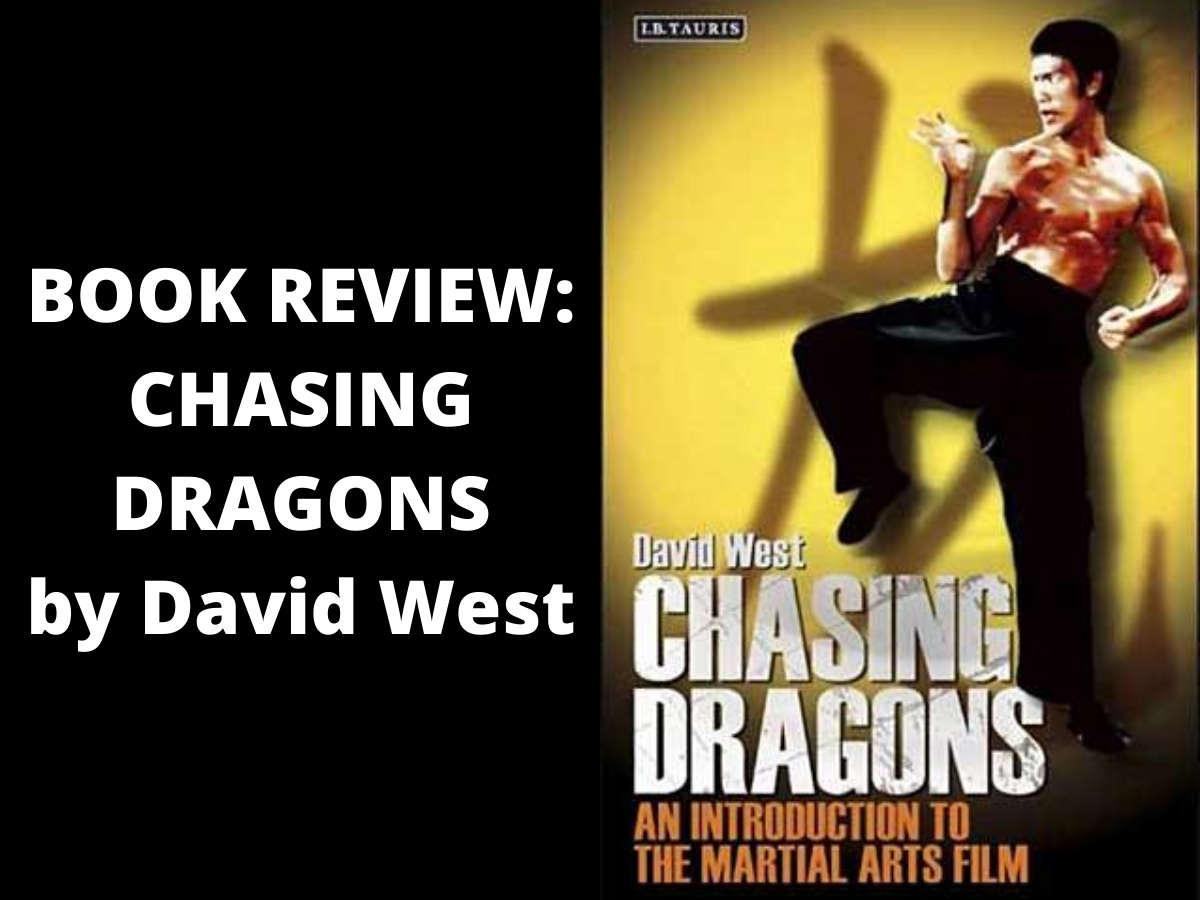Chasing Dragons: An Introduction To The Martial Arts Film by David West
I don’t recall the day or date I first saw Bruce Lee in Enter The Dragon, but it was one of those pivotal moments in my life, where something changed and future decisions about entertainment and exercise were made. It is a film I have seen many times, can quote stupid lines of dialogue from it (‘Tea, Mr Braithwaite?’, ‘The art of fighting without fighting’, ‘A tournament of tru-ly ep-ic pro-portions’) and even have a Hong Kong Phooey t-shirt with a phrase from the film on it (‘Don’t think, feel’). I think this explains a lot.
This enjoyment of the martial arts film was helped by the advent of VHS. When we got a VCR in the mid-1980s, we also joined a local video rental shop. It was only a small place, upstairs from another shop, but it had a very extensive range of releases. The strange thing was that when you rented a recent release, which had a green sticker on it, you could rent any video with a red sticker on it for free. For some reason, the majority of the red sticker videos were martial arts films, so I spent a lot of my youth watching badly dubbed and sound-mixed kung fu films, much to our parents’ dismay (my father still loathes any martial art film, no matter the quality, based solely on his experiences of being forced to watch so many terrible videos).
Although I may have watched many martial arts films, I’m not an expert (or even an enthusiast), but I was interested to read a book introducing the subject to an outsider. David West provides an interesting overview to the genre, starting by splitting it into three sections: Japan, Hong Kong, and Hollywood/USA. He then provides a short historical perspective to the area (putting the Japanese and Hong Kong films into context), before tackling the films in a roughly chronological order, but with a focus on filmmakers/stars/themes which made a significant contribution in the field. So, in the Japan section, we start with Kurosawa Akira, the films about Miyamoto Musashi (inspiration for the wonderful comic book Usagi Yojimbo), the chambara (swordplay film) and the lone dog hero, the films about Zatoichi, the films about Oichi the blind swordsman, the decline of the chambara, and the modern films that use the genre.
The Hong Kong section talks about China and the monks of Shaolin, the films about Wong Fey Hung, the films of Lau Gar Leung, Bruce Lee, Jackie Chan, Sammo Hung, John Woo, Ringo Lam, Tsui Hark, Chow Sing Chi (aka Stephen Chow), as well as the ‘classic’ kung fu movie. The Hollywood section, the smallest section of the book, talks about the introduction of martial arts to American films, Bruce Lee, Chuck Norris, Cannon films, films about ninjas, The Matrix and the use of martial arts in the modern action movie. There is a lot to cover, so West has to be selective, but he does a good job of covering everything and providing interesting background information about each area (such as Hung Kuen being the predominant style in early Hong Kong martial arts films because it came straight from students of Wong Fey Hung and the teachings of the Shaolin style and the Ten Tigers of Canton, known for its deep horse stance).
Half the fun for someone reading the book who is a fan is playing the ‘I’ve seen that’ game and agreeing/disagreeing with the author; the other half is making note of films to rent based on his opinions and descriptions. When he describes the glut of awful exploitation videos of the 1980s made in America, my cheeks burned with shame when I recognised some of the dross I had seen, such as truly awful Gymkata, which sees an American gymnast knocking out villains only when conveniently located gymnastic equipment is present.
The only disconcerting factor when reading the book is rigid definition of types of martial arts films West believes in – sword films must only be ‘stray dog’ films; films with kung fu must be about teachers/students and bettering their martial arts by bettering themselves. Anything else isn’t a ‘proper’ film and is just appropriating the martial art for its own nefarious purposes. The venom he unleashes on Kill Bill is hilarious – he seems to miss the point completely on Tarantino’s homage/love letter to martial art movies and spends a lot of time just having a go and pointing out what he sees as the problems with it. I know that having a strong point of view can aid and influence the author’s work, but it overpowers his interpretation and appreciation of films because they stray outside his strict parameters.
This niggle aside, however, the book is entertaining, informative and a nice reference book for the fan of martial arts film and a good introduction to the genre as a whole. Never boring or academic, and with a serious love of martial arts and the films themselves, I’ve been convinced to watch a list of films that I wouldn’t have been aware of if I hadn’t read this book.




